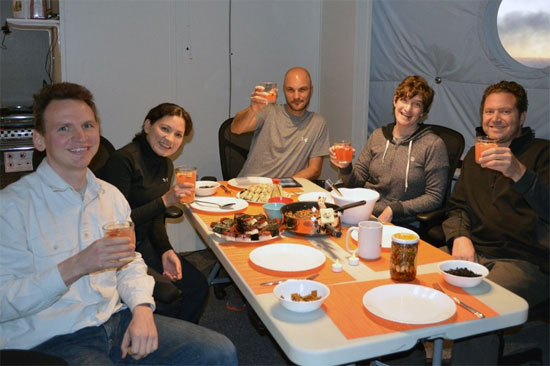Try food on Mars
Flour tortillas, clothes that don't absorb odors, animal robots, which are necessary for astronauts after about 20 years, when they fly to Mars. The passion for conquering Mars has 'seeped into the blood' of a group of 6 volunteers, currently living in a fictional 'space base' on the Hawaiian Islands.
The simulation of the Mars conquest campaign is part of the Food Testing program for Mars (HI-SEAS) mission and has been going on for over a month. 6 volunteers were selected among 700 people to participate in the simulation campaign. They are: Space artist and researcher Angelo Vermeulen, Yajaira Sierra-Sastre robot design engineer, engineer Simon Engler, geologist Sian Proctor, biologist Oleg Abramov and female journalist Kate Green.
What to bring in backpacks?
The mission of these six people is to show the best products, including the right food and clothing for the first group of astronauts to fly to Mars. As planned, after 2030, the US Aerospace Agency (NASA) will take people to Mars.
'Experts' live in a closed chamber on Mauna Loa volcano in Hawaii. Their campaign will last for 3 months. NASA funded 947,000 USD for this campaign. Most of the time the volunteers live in closed rooms, and when they want to go out they have to wear special space suits, just like the clothes of astronauts on the international space station ISS. Communication between their 'base' with the outside was delayed by 20 minutes, equivalent to the time for electromagnetic waves to travel from Mars to Earth and vice versa.

Dinner with flour tortillas and vegetables
After a month of experimenting with foods, the volunteer team selected the optimal menu for astronauts. It is tortilla cake with dried vegetables or lyophilization (lyophilization).'The food packages are great. We combine tortilla cakes with different types of vegetables, sausages or canned fish , 'said Angelo Vermeulen, team leader. If talking about drinks, 'Tang' orange juice is the number one priority, used by astronauts for 50 years.
No need to change clothes
The volunteer team also experimented with the 'dirty strength' of the shirt. 'The two members of the group did not change their training clothes for 5 weeks but the shirt did not stink,' Vermeulen said.
To avoid feelings of loneliness, the team was provided with interactive robots shaped like pets. The reason is that the 4-legged animals reared in the house, according to studies, have the ability to ease stress and connect emotionally with people.
- Reveal human food to Mars
- NASA cooperates with Peru to implement a potato planting project in the Mars environment
- People can eat food grown from Mars
- Some things to know if you want to 'immigrate' Mars
- Scientists love to plant trees on Mars
- Details of how humans will live in Mars, expected in 20 years
- Bees pollinate on Mars: Can you believe it?
- Did the ocean on Mars get into the rock?
- What do people prepare for the work of taking people to Mars?
- Peru is about to bring 100 varieties of potatoes to Mars
- 'Turning into food' may be the key to bringing people to Mars
- NASA explains the confusing
 Van Allen's belt and evidence that the Apollo 11 mission to the Moon was myth
Van Allen's belt and evidence that the Apollo 11 mission to the Moon was myth The levels of civilization in the universe (Kardashev scale)
The levels of civilization in the universe (Kardashev scale) Today Mars, the sun and the Earth are aligned
Today Mars, the sun and the Earth are aligned The Amazon owner announced a secret plan to build a space base for thousands of people
The Amazon owner announced a secret plan to build a space base for thousands of people